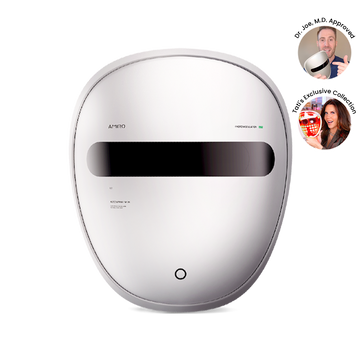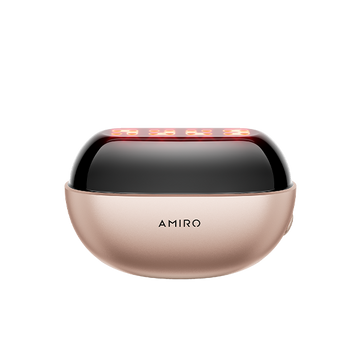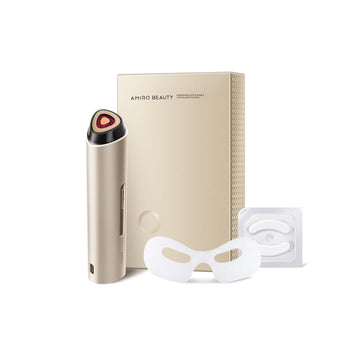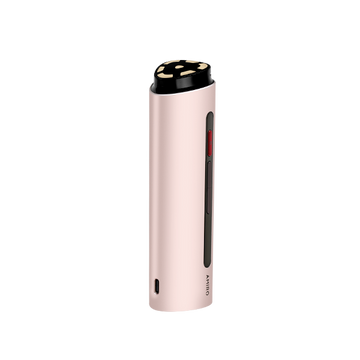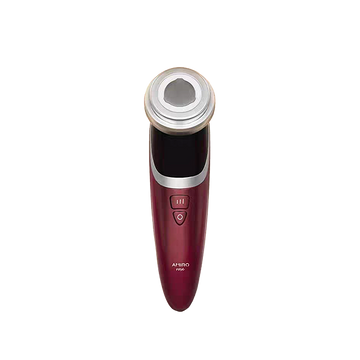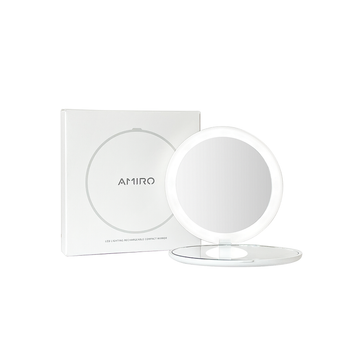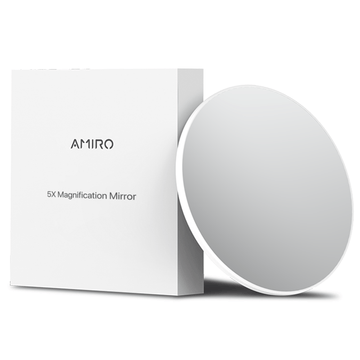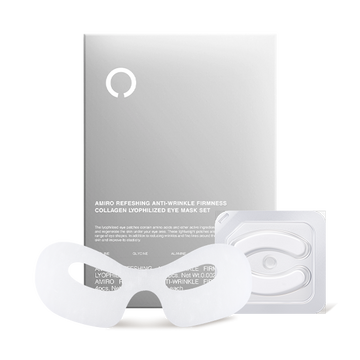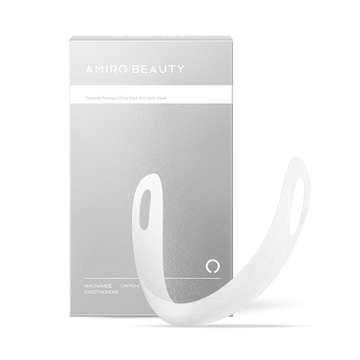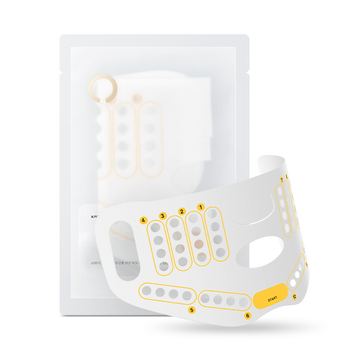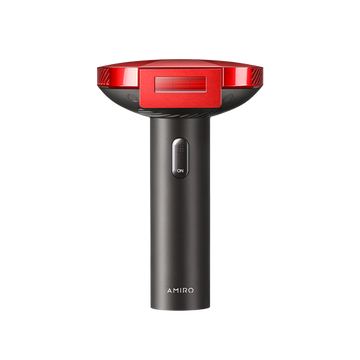How to Remove Chin Hair Permanently At Home
Quicklook
| Method | Pros | Cons | Features |
|---|---|---|---|
| Tweezing |
|
|
|
| Depilatory Creams |
|
|
|
| IPL Hair Removal Devices |
|
|
|
| Threading |
|
|
|
| Sugaring Paste |
|
|
|
| Essential Oils |
|
|
|
| Natural Exfoliants |
|
|
|
Introduction
For many women, unwanted chin hair can be an upsetting problem, especially when hormones fluctuate. While medical procedures provide more permanent solutions, natural and do-it-yourself methods offer affordable, gentle options for removing chin hair at home.
By understanding how different methods work, you can find the right approach for your needs and budget.

Tweezing
Tweezing works by pulling hair from the follicle, providing temporary hair removal.
Tweezing involves grasping hairs with slanted tweezers and pulling them out from the root. It's a targeted method but can irritate skin if done frequently. Sterilize tweezers, grab the hair as close to the root as possible and pull in the direction of hair growth to minimize pain. Tweezing provides temporary hair loss, lasting 3 to 5 weeks.
Proper technique and tools, such as slant-tip or precision tweezers, are essential for minimizing pain. However, tweezing can be damaging if done improperly or too frequently.
Depilatory Creams
Depilatory creams dissolve hair, leaving skin smooth for up to a week. Always perform a patch test to determine sensitivity and wait time. They must be used carefully to avoid irritation.
Some natural cream recipes include turmeric, oatmeal, lemon juice, and natural oils. Be cautious not to leave the cream on too long, as it can cause irritation. Don't leave on too long which causes irritation. For the best results, reapply according to product directions.
IPL Hair Removal Devices
IPL, or intense pulsed light therapy, uses broad-spectrum light to damage hair follicles and reduce unwanted hair growth.
IPL hair removal devices designed for home use direct pulses of light energy at the hair shaft, which then transfers heat down to damage the follicle.
With repeated treatments over time, IPL can significantly thin and prevent regrowth of chin hair for months.
IPL Chin Hair Removal Pros
- Convenient at-home treatment with no downtime.
- Allows for gradual hair loss over multiple sessions for a natural look.
- Can treat a wide surface area effectively.
- Little to no pain when used as directed. Numbing creams can enhance comfort.
- Achieves stable, long-lasting hair loss over time.
IPL Chin Hair Removal Cons
- Typically requires 6-8 treatments for best results. It does not produce immediate permanent hair loss.
- Higher upfront cost for an IPL device, though less expensive over time than professional procedures.
- May cause initial side effects like minor redness, irritation or pigmentation changes if not used properly for your skin type and at the right intensity setting.
- Requires periodic maintenance treatments every 4 to 6 months to prevent hair regrowth.
- Does not work for everyone. Results depend on factors like hair color, skin tone, hormonal changes and consistency of use.
- Can only treat hair in the active growth phase. Dormant follicles require additional treatments once activated to damage the follicle.
Using an IPL device specifically designed for facial hair removal and following the instructions precisely can help minimize risks and side effects. Be sure to shave the chin area before the first treatment, start on a lower intensity setting and increase the strength gradually as tolerated for best results. Check our blog if you're wondering IPL vs laser.
With regular use over time, IPL can provide significantly smoother, hair-free skin on the chin area. For more permanent hair loss, professional medical treatments may be required. But IPL remains an excellent method for long-term hair reduction and management at home for many. Know more from our blog: the Best Hiar Removal Device in 2023.
Threading
Threading uses twisted thread to pluck hairs from the roots, providing a close result with minimal skin contact. Highly accurate and able to grab finer hairs, threading lasts around the same time as tweezing but requires practice to master. See a professional threader first to learn proper technique before attempting at home.
Sugaring Paste
Sugaring paste sticks to hair, not skin, and is made from natural ingredients like sugar, water, and lemon juice.
Homemade sugaring paste can be applied and removed correctly for a gentle alternative to waxing. Results can last 3 to 6 weeks, as hair is removed from the roots.
Essential Oils
Essential oils like lavender, rosemary and peppermint help hair follicles stay dormant when applied to skin. Dilute a few drops of oil in jojoba or almond oil and gently massage into the chin area.
For best results, apply after hair removal and daily to discourage new growth. Oils require ongoing use to remain effective but provide a natural solution for management and prevention.
Natural Exfoliants
Exfoliating removes dead skin and unclogs hair follicles, allowing for cleaner removal. Use natural ingredients such as sugar, oatmeal, coffee grounds or citrus peels 2-3 times a week to gently buff the chin.
Be careful not to over-exfoliate, especially after other hair removal methods which can lead to irritation. Exfoliation improves penetration of oils and lotions as well as hair removal efficacy.
Initial Side Effects
Some potential side effects can occur with hair removal methods like threading, tweezing, waxing or using depilatory creams. The most common initial side effects include:
- Redness - Hair removal that pulls hair from the roots or involves friction against the skin can cause temporary redness, known as post-inflammatory erythema. It is caused by minor inflammation in the hair follicles and surrounding skin. Redness usually disappears within a few hours to a couple of days. Applying aloe gel, hydrocortisone cream or a cold compress can help reduce redness.
- Irritation - Harsh chemicals in depilatories, wax or certain essential oils may irritate sensitive skin, causing itching, burning or stinging. Always do a patch test as directed to check for irritation before use. Avoid any products that irritate your skin. Mild irritation usually clears up quickly once the offending product is removed. See a dermatologist for severe or persistent irritation.
- Ingrown Hairs - Hair removal methods like shaving, plucking or waxing may lead to ingrown hairs for some people, especially those with coarse or curly hair. Ingrown hairs form when shaved or plucked hair curls back on itself under the skin. Applying exfoliants, moisturizers and warm compresses can help prevent and clear up ingrown hairs. See a dermatologist for severe or infected ingrown hairs.
- Bumps - Papules or pustules may form when hair is removed from the roots, especially on sensitive areas like the face or bikini line. The bumps are usually temporary minor inflammations that clear up on their own in a few days. Warm compresses, aloe gel, hydrocortisone cream and exfoliating the area can speed up healing. See a doctor for painful, swollen or infected bumps.
- Pigmentation Changes - Temporary darkening or lightening of skin can occur, especially on areas like the upper lip. Pigmentation problems tend to gradually fade in a few weeks to months. Use broad-spectrum sunscreen, exfoliate and apply brightening creams to speed fading and protection from UV radiation which can worsen pigmentation issues. See a dermatologist for severe or permanent pigmentation changes.
- Bruising - Vigorous plucking, threading or waxing in the same area may lead to minor soft tissue damage and bruising. Bruising usually disappears within 1 to 2 weeks. Arnica gel or bromelain tablets/capsules may speed up healing and bruise clearance. See a doctor for unexplained or severe bruising. Repeating the treatment method too soon could lead to further bruising, so wait until the area has healed before attempting again.
- Infection - If not done properly using sterile tools and technique, plucking, threading or waxing carries a risk of infection. See a doctor for signs of infection like swelling, heat, severe pain, pus, redness that spreads or red streaks which may require antibiotics. Always thoroughly wash hands, tools and the treatment area to avoid infection.
In most cases, these side effects are temporary and minor. However, if any reaction seems severe or persists more than a few days, consult your doctor. It's best to have a medical professional perform threading, waxing or other hair removal on sensitive facial areas the first time.
Be sure to follow all product directions and aftercare instructions carefully to minimize irritation and side effects.

FAQs about Chin Hair Removal
How do I stop or remove excessive hair growth on my chin?
To reduce excessive chin hair growth, you have several options:
- Tweeze the hairs using slant-tip tweezers. Tweezing removes the hair from the follicle and can provide temporary hair loss for 3-5 weeks. Be very gentle to avoid irritation and damage.
- Use depilatory creams like turmeric, oatmeal or lemon juice to dissolve the hair for up to a week. Always do a patch test and follow directions.
- Try intense pulsed light (IPL) therapy using an at-home device. IPL directs light energy to damage the hair follicle and can provide long-lasting hair reduction over 6-8 treatments.
- Apply essential oils such as lavender, rosemary or peppermint oil to discourage new hair growth. Dilute a few drops in a carrier oil like jojoba oil and gently massage into the chin.
- Exfoliate the area 2-3 times a week to remove dead skin and unclog hair follicles. Use ingredients like sugar, coffee grounds or citrus peels. Be gentle to avoid irritation.
- See a dermatologist for prescription medication if your excess hair growth is due to a hormonal imbalance or other condition. Medication or medical procedures may be required for permanent reduction.
What are the pros and cons of plucking chin hair?
Plucking chin hair, also known as tweezing, has some pros and cons:
Pros:
- It’s a targeted method so you can pluck hairs specifically in the area you want.
- It provides temporary hair loss for 3-5 weeks as it removes the hair from the follicle.
- It’s a very affordable method using just a pair of tweezers.
Cons:
- It can irritate the skin, especially if done frequently or repeatedly in the same area.
- It’s time-consuming to pluck hairs one by one.
- Improper technique can lead to hair breakage and damage. You must grab the hair close to the root.
- The hair will grow back and requires maintenance. Plucking does not provide permanent hair loss.
- Some people find plucking chin hair painful, though less painful than waxing.
- No, plucking chin hair will not make the hair thicker or coarser. This is a myth. Hair that regrows will be the same type of hair you had before.
So in summary, plucking chin hair is a temporary solution that must be repeated. While it does not permanently remove hair or alter hair growth, it can effectively reduce excess hair when maintained regularly. Be very gentle to avoid irritation and damage. For longer lasting reduction, other methods like IPL therapy or medical procedures may be needed.
Conclusion
In summary, alternative natural methods, such as tweezing, depilatory creams, threading, sugaring paste, essential oils, natural exfoliants, and IPL devices, provide gentler options for chin hair removal at home.
Finding the right combination of temporary and longer-lasting methods depends on your needs, lifestyle and budget. Speak to a dermatologist for unwanted hair that causes distress or could indicate an underlying condition.
With patience and self-care focused on your wellbeing, you can achieve comfortably smooth skin using safe, natural ingredients and simple tools. Embrace self-acceptance, and consult a dermatologist for serious hair growth concerns.
Read More
- Leg Hair Removal: 7 Methods Compared and Which is Best for You?
- Age-Defying Miracle: The Best Eye Rejuvenation RF Device in 2023!
- Forehead Wrinkles Treatment: How Your Diet Can Smooth Them Away?
- Pubic Hair Removal: How to Minimize Pain and Discomfort?
- Anti Aging Treatment: Find the Best, Types of Aging Skin Conditions!
